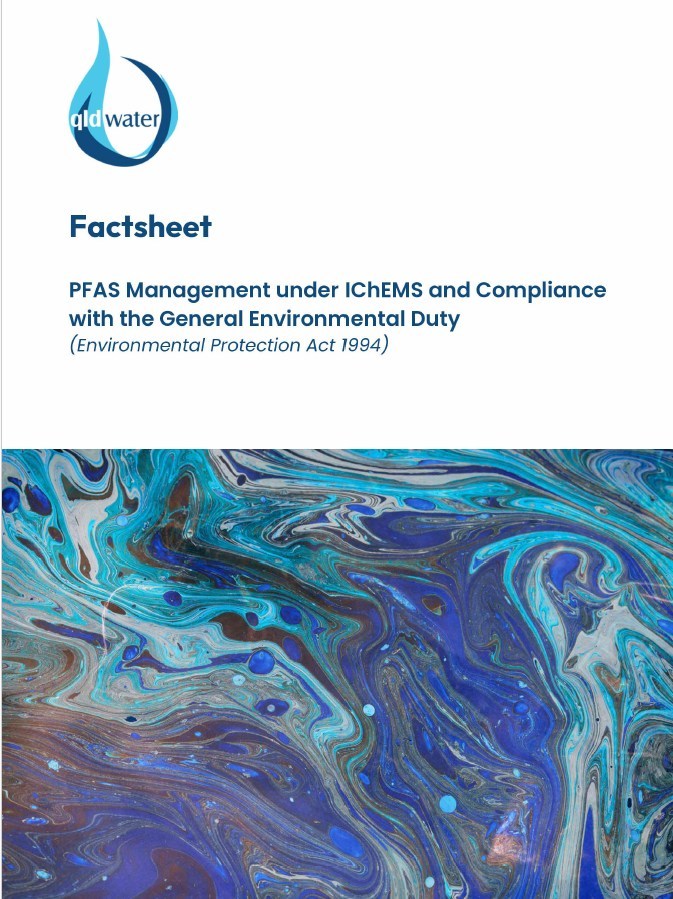PFAS
PFAS is a term used to refer to a large group of chemicals (per- and polyfluoroalkyl substances) that have been used since the 1950s. The chemical structure of PFAS gives them useful properties, such as thermal stability and the ability to repel water and oil, that makes them valuable in a wide variety of industrial and consumer applications. They have been used in the manufacture of non-stick cookware, fabric, furniture and carpet stain protection, food packaging and some types of firefighting foam.
The best-known examples of PFAS are:
- perfluorooctane sulfonate, also known as PFOS,
- perfluorooctanoic acid, also known as PFOA,
- perfluorohexane sulfonic acid, also known as PFHxS.
During the manufacturing process of some PFAS, and the use of PFAS products, PFOA and PFOS have been released to the air, water and soil throughout the world. Unlike many other organic chemicals, PFOS and PFOA do not bind strongly to soil and organic materials. This means that they are readily transported in solution with surface and groundwaters. However, PFAS have been studied around the world and are found in many places because they do not break down very quickly in the environment.
PFAS have never been manufactured in Australia, and the importation of PFAS to Australia has been reduced since 2002. Some sites are investigated for PFAS contamination due to their association (current or historical) with aviation, defence or fire and emergency services. PFAS is a major constituent of aqueous film forming foams (AFFF) used in firefighting that have been in use in Australia since the 1950s. The need for training of personnel in firefighting techniques has resulted in repeated use of the foams which in turn has resulted in concentration of PFAS.
In Australia PFAS are ubiquitous at low concentrations in wastewater influent. Wastewater treatment plants receive and treat wastewater on behalf of the community from domestic, industrial, trade waste and landfill sources. The wastewater treatment process is designed and optimised for the removal of organic carbon, nitrogen, phosphorus, and pathogenic microorganisms. Treated effluent, which is either used for recycled water production or discharged to the environment, and biosolids are the primary products produced at a WWTP. Persistent pollutants like PFAS compounds can contaminate the wastewater stream from many sources that are not destroyed by WWTP processes, and pass into effluent or biosolid streams.
Under the new chemical scheduling as part of Australia’s Industrial Chemicals Environmental Management Standard (IChEMS), the three PFAS chemicals PFOS, PFOA and PFHxS (and their precursors) are banned from future import, export and manufacture, and new limits have been set for disposal. In Queensland, compliance with IChEMS is considered to be part of the environmental obligations (specifically General Environmental Duty) outlined in the Environmental Protection Act 1994 (Qld).
PFAS and General Environmental DutyTo support the urban water service providers to meet their General Environmental Duty obligations, qldwater has developed a Fact Sheet and Manufacturers Declaration for its members. These items have been designed to send to suppliers of chemicals to our water businesses and are to support compliance with legislative requirements under the Industrial Chemicals Environmental Management Standard (IChEMS) and environmental obligations (specifically General Environmental Duty) outlined in the Environmental Protection Act 1994 (Qld). The accompanying Manufacturer's Declaration template is available only to water utility members of qldwater. If you would like a copy of the template, please email qldwater at enquiry@qldwater.com.au |

|
Useful Links on PFAS
The Queensland Government has a site devoted to PFAS https://www.qld.gov.au/environment/management/environmental/pfas including a range of information about chemicals and specific investigations on the historic use of firefighting foam at Queensland sites.
The Queensland Government also manages a page that includes a number of links to resources and relevant state regulations https://www.qld.gov.au/environment/management/environmental/pfas/management-plan.
The National Health and Medical Research Council has conducted a review of PFAS in Australian Drinking Water and has produced a comprehensive set of documents, including fact sheets and health advice https://www.nhmrc.gov.au/health-advice/environmental-health/water/PFAS-review.
The review has led to the updated guidance on PFAS for the Australian Drinking Water Guidelines. This advice was published in June 2025, and provides revised health based guideline values for 5 PFAS congeners https://www.nhmrc.gov.au/about-us/publications/australian-drinking-water-guidelines.
The Australian Government has a website specifically devoted to PFAS its management in Australia https://www.pfas.gov.au/.
The Department of Climate Change, Energy, the Environment and Water has developed the PFAS National Environmental Management Plan which includes advice on managing PFAS contamination in the environment https://www.dcceew.gov.au/environment/protection/publications/pfas-nemp-3. The plan was updated to Version 3.0 in December 2024 to include advice on the beneficial reuse of biosolids in agriculture.
The Department of Defence provides information on investigation and management of its national program to review, investigate and implement a comprehensive approach to manage the impacts of PFAS on and in the vicinity of its bases around Australia - see http://www.defence.gov.au/Environment/PFAS/.
qldwater hosts an information website on the presence of contaminants of concern (including PFAS) in households, and the actions that community members can take to reduce their transfer to the environment https://chemicalconcoctions.org/.